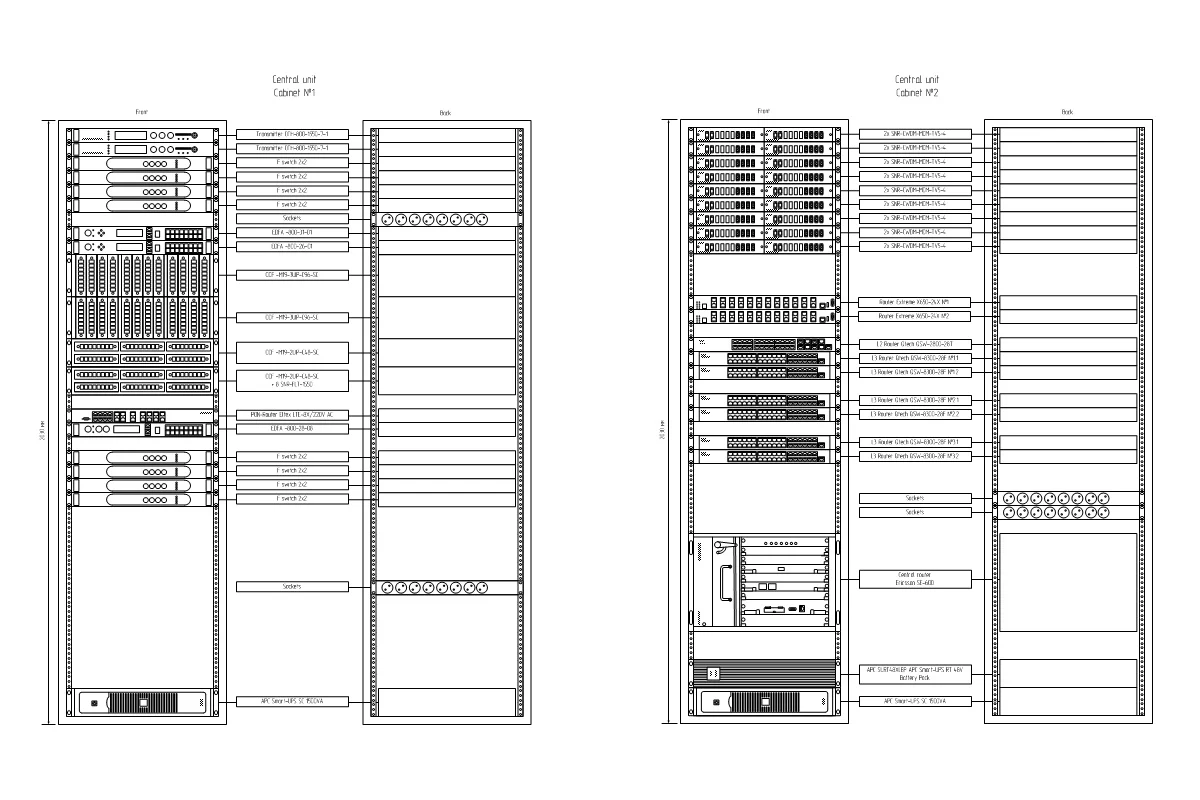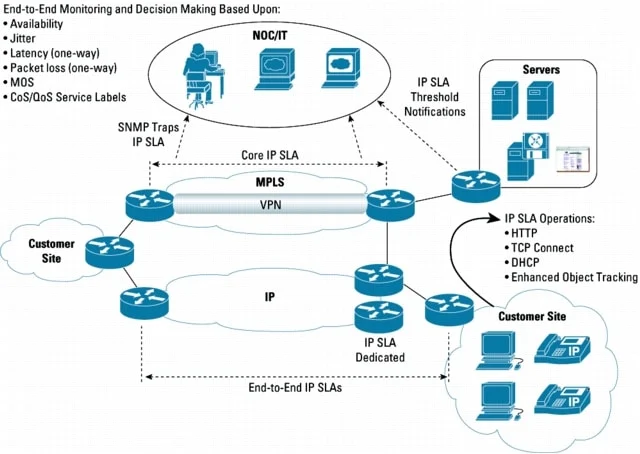
Fiber optic networks are the foundation of current telecommunications, permitting rapid data transmission over huge distances. As these systems develop progressively intricate, proficient administration solutions have gotten fundamental for telecom and utility organizations. Fiber network management software smooths out the whole lifecycle of fiber optic systems, from planning and design to development, growth, troubleshooting and upkeep.
Table of Contents
- Introduction to fiber management software
- Key features of fiber network management software
- Choosing the right fiber network management system
- Conclusion
- Related posts
- Frequently asked questions (FAQ)
- Sources
Key Takeaways
- Fiber network management software gives end-to-end control of fiber optic networks, from planning and design to building, operations and maintenance.
- These platforms provide functionality such as fiber network planning and design tools, construction supervision, inventory calculation and upkeep abilities.
- Main advantages involve better productivity, boosted transparency, sped up rollout, maximized resource usage, adherence and higher client contentment.
- When picking a fiber network management software, businesses should assess their company requirements, scalability needs, integration abilities, etc.
- Particular capabilities like fiber splice diagram creation and network mapping tools can complement these answers for specific jobs.
- Utilizing the suitable fiber management software enables single source of truth, simplified operations and thorough visibility into fiber optic network infrastructure.
Introduction to Fiber Management Software
What is fiber network management software?
Fiber network management software is a complete set of tools designed to simplify the entire lifecycle of fiber optic networks, from initial planning and design to construction, operations and maintenance. These powerful solutions use GIS technology and advanced data analytics to provide a centralized platform for managing complex fiber optic network infrastructure, acting as both OSS and BSS.
Fiber management programs allow telecom and utility businesses to proficiently arrange and design innovative fiber optic systems, considering aspects like terrain, obstacles, current infrastructure and regulatory necessities. It additionally simplifies construction by offering thorough project administration instruments, empowering consistent cooperation between asset holders, administrators, engineers and contractors.
Benefits of fiber network management software
Implementing fiber network management software offers numerous benefits to organizations operating fiber optic networks:
- Through merging all network information into one system, fiber supervision applications remove data divides and simplify processes, leading to boosted output and decreased operational expenditures.
- These products give a thorough look at the whole fiber optic network, including detailed inventory and asset management capabilities, allowing better decision-making and proactive upkeep.
- Utilizing sophisticated network design instruments, fiber supervision applications assist businesses to promptly implement brand-new fiber optic networks or broaden current ones. This guarantees well-timed and economically efficient deployments.
- Through precisely drafting and examining network assets, these solutions assist companies in optimizing the utilization of their fiber optic networks, decreasing waste of resources and maximizing return on investment.
- Fiber network management programs frequently incorporate tools for upholding adherence to industry rules and standards, decreasing the possibility of non-compliance fines.
- Through allowing quicker service setup and proactive upkeep, fiber network management systems ultimately result in greater client contentment and retention levels.
Key Features of Fiber Management Software

Network design and planning
Fiber management software offers strong tools for designing and planning new FTTx rollouts or expanding current networks. These tools frequently integrate with GIS platforms, permitting users to visualize and analyze geographic data, existing infrastructure and potential obstacles. Engineers can generate detailed network designs, optimize routes and create cost estimates, ensuring efficient and cost-effective deployments.
Moreover, numerous resolutions provide sophisticated modeling and simulation abilities, permitting organizations to examine various situations and assess the effect of different design choices prior to implementation. This proactive method reduces potential problems and guarantees that the ultimate network design satisfies the organization’s particular needs.
Construction and project management
Once the network design is finalized, fiber management software offers strong project management tools to simplify the construction process. These tools enable cooperation between asset owners and operators like PUCs, builders and contractors, ensuring smooth coordination throughout the project lifecycle.
Options like workforce management and progress monitoring allow project supervisors to oversee and command all facets of the network rollout competently. Moreover, some systems provide mobile apps, allowing field teams to get updated info and report headway in real-time, further boosting productivity and decreasing potential dealys.
Inventory and asset management
Successful stock and asset supervision is vital for upholding the reliability and efficiency of fiber optic networks. Fiber management software provide thorough utilities for monitoring and overseeing all network assets. Engineers are able to build thorough asset hierarchies, document and update asset details and output reports on asset condition, location, usage. This degree of visibility and command allows ISPs to optimize resource utilization, prepare for upcoming capacity requirements and guarantee adherence with industry rules and standards.
Maintenance and troubleshooting
Proper upkeep and competent problem-solving are crucial for reducing network outages and guaranteeing peak functionality. Fiber network management software offer sophisticated utilities for network monitoring, pinpointing prospective complications, bottlenecks, and swiftly addressing troubles.
Features like automatic issue detection, root cause examination, and integrated workflow control streamline the upkeep and troubleshooting procedures. Moreover, numerous solutions provide mobile apps that permit field workers to get network info, obtain work orders, and report problems in real-time, enabling quicker response periods and more efficient resolution of network faults.
Subscriber relations
Some fiber network management software dive even deeper and offer ISPs a full orchestration of subscriber relations automation. This includes billing, self-service cabinets for users that helps them resolve their problems and freeing a lot of time for providers workforce.
By utilizing these crucial capabilities, organizations can efficiently oversee their fiber optic networks throughout their complete lifecycle, from initial mapping and design to construction, operations and maintenance.
Leading fiber network management software providers
The fiber management system industry is saturated, alongside numerous suppliers offering thorough arrangements to satisfy the different requirements of telecom and utility organizations. Few of the most well-known providers in this space are: 3-GIS, Vitruvi, IQGeo, Schneider Electric’s ArcFM Fiber Manager, Vetro Fibemap, BiarriNetworks.
Downsides
Any comprehensive fiber network management system has its downside. None of the abovementioned is free from flaws and inconveniences. As in any industry, biggest network management systems lack simplicity in some of their parts, understandability in others and thirdly simplicity. Thus in some of them you can hardly create a fiber cable network map, in others asset management is too complicated, and in others creating a logical connections between switches and routers, as well as creating fiber splicing diagrams is carried so badly, that one can spend days on taming several schemes that could be created in AutoCad in couple hours.
A separate solution for fiber management
Adding yet another tool to ISP’s software orchestra isn’t profitable. But what if it can save days and months of work of network engineers, especially those involved in dealing with optical network management and monitoring?
Splice.me fiber network management system works both as a standalone system for creating fiber splice diagrams and as a support or upgrade to a behemoth like 3-GIS or similar software. With its help a network engineer can draft, create, manage, print out the core of any optical network – the fiber splice diagrams, as for a single or a bunch of nodes, and for the whole fiber network at once. Due to splice.me’s simplicity and speed, an engineer can create these diagrams literally in several clicks and have them all in front of his eyes, instead of spending weeks in an all-embracing monitoring software.
Choosing the Right Fiber Network Management Software

With the wide range of fiber network management software available in the market, picking the correct one for your company can be a tough job. Here are some key things to consider when evaluating and choosing the most suitable option:
Evaluating your business needs
Prior to investigating various software possibilities, it’s vital to evidently outline your company’s particular needs and goals. Parameters like the scale and intricacy of your fiber optic network, the quantity of users and nodes, and the precise capabilities needed (e.g., network planning, construction oversight, inventory monitoring, upkeep, billing) will help in narrowing the selections.
Scalability and integration
As fiber optic network expands and develops, your preferred software solution ought to have the capacity to scale effortlessly to suit future needs. Search for solutions that proposition adaptable organization choices (on-premises, cloud-based, or 50/50) and can without much of a stretch coordinate with your current frameworks and work processes like GIS, ERP, CRM.
User experience and support
A straightforward interface and intuitive navigation can greatly improve productivity and adoption rates among your team. Assess the software’s user experience, including its simplicity, customization possibilities, and reporting abilities. Furthermore, contemplate the degree of backing offered by the supplier, encompassing training materials, documentation, and continuous technical aid.
When comparing fiber network management software solutions, it’s likewise critical to contemplate specific tools that can supplement and improve explicit parts of your business the executives measures. Carefully evaluating your company’s special requirements, emphasizing expandability and integration abilities, and thinking about user experience and assistance, you could make an comprehensive choice and pick a network management system that lines up with your long-lasting objectives, and boosts the productivity of your ISP in general.
Conclusion
While thorough and all-embracing network management systems provide sturdy abilities for end-to-end network supervision, specialized instruments like Splice.me can complement that software by simplifying particular duties and streamlining specific responsibilities. Splice.me greatly simplifies everything connected with fiber splice diagrams, a crucial part of fiber optic network paperwork, but is not intended to be an answer for all things fiber network. With its simple (even primitive) and understandable interface and cool automation features, splice.me allows network engineers to draft, generate, and maintain fiber splice sheets and diagrams in as few as three clicks, redeeming of manual mapping and drafting in a GIS environ. By incorporating splice.me into their workflow, ISPs can boost productivity, decrease mistakes, and guarantee perfect documentation practices, ultimately adding to more practical fiber network management.
Related Posts
- Fiber splice diagram creation platforms
- How to design fiber optic networks efficiently
Frequently Asked Questions (FAQ)
What is fiber network management software and why is it important?
Fiber management software is a set of tools intended to simplify the whole lifecycle of fiber optic cable networks, from planning and design to construction, operations, and maintenance. It’s vital for telecom and utility companies to efficiently handle their intricate fiber optic infrastructure, guaranteeing optimal network performance, decreasing operational expenses, and enabling swift deployment of new rollouts or expansions.
What are the key features of fiber management systems?
Fiber management systems usually have features like network design and planning tools, construction and project management capabilities, inventory and asset management modules, maintenance, troubleshooting features. These capabilities allow organizations to centralize their network data, streamline workflows, and gain comprehensive visibility into their fiber optic cable infrastructure.
How does fiber management software improve operational efficiency?
By combining all network information into a single platform, fiber management software gets rid of data silos and simplifies workflows, leading to higher productivity and decreased operational expenses. It additionally offers sophisticated analytics and reporting abilities, permitting organizations to make data-driven choices and optimize their network operations. While some features may be over complicated or not user friendly, splice.me stands out as a unique addition to such software.
What are some of the leading fiber management software providers?
A few of the top suppliers of fiber management software are: SchemaFiber, OSP Insight, IQGEO, Patch Manager, FiberPlanIT, CrescentLink Geograph, Vetro FiberMap, GraphicalNetworks, FibKit, CoconFiber, CircuitVision, Continuum, Inova TeleCAD, NetStork, 3GIS, CableScout, UserSide, Render Networks, Biarri Networks, GeoStruct, etc. These systems offer strong and versatile solutions intended for the particular necessities of telecom and utility companies.
How do I choose the right fiber management software for my organization?
Picking the correct fiber network management software entails evaluating your organization’s particular business requirements, contemplating aspects like the scale and intricacy of your fiber optic network, scalability necessities, and integration with other frameworks, OSS/BSS systems. It’s furthermore crucial to gauge the user experience, backing, and training furnished by the software supplier to guarantee seamless adoption.
Sources
- Fiber management systems market size, share, competitive landscape and trend analysis report
- Global fiber management systems market research report 2024
Don't hesitate! Start using splice.me
Create, manage, control all your fiber splicing in one place, fast and easy



